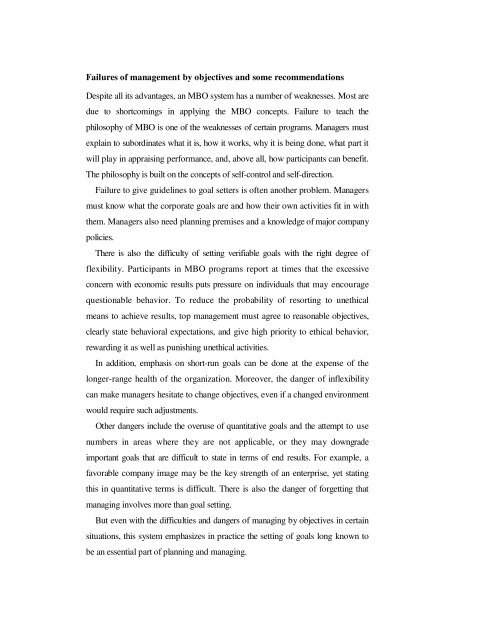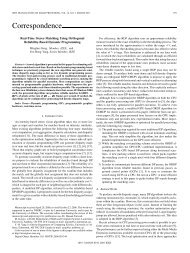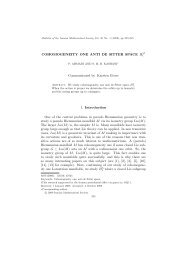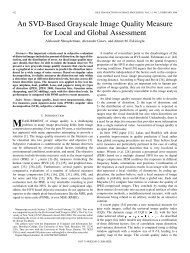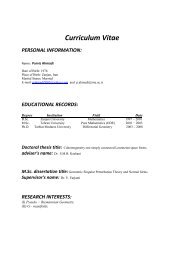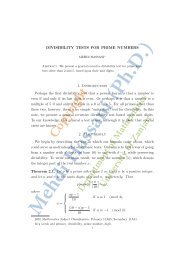Essentials of Planning and Managing by Objectives
Essentials of Planning and Managing by Objectives
Essentials of Planning and Managing by Objectives
You also want an ePaper? Increase the reach of your titles
YUMPU automatically turns print PDFs into web optimized ePapers that Google loves.
Failures <strong>of</strong> management <strong>by</strong> objectives <strong>and</strong> some recommendationsDespite all its advantages, an MBO system has a number <strong>of</strong> weaknesses. Most aredue to shortcomings in applying the MBO concepts. Failure to teach thephilosophy <strong>of</strong> MBO is one <strong>of</strong> the weaknesses <strong>of</strong> certain programs. Managers mustexplain to subordinates what it is, how it works, why it is being done, what part itwill play in appraising performance, <strong>and</strong>, above all, how participants can benefit.The philosophy is built on the concepts <strong>of</strong> self-control <strong>and</strong> self-direction.Failure to give guidelines to goal setters is <strong>of</strong>ten another problem. Managersmust know what the corporate goals are <strong>and</strong> how their own activities fit in withthem. Managers also need planning premises <strong>and</strong> a knowledge <strong>of</strong> major companypolicies.There is also the difficulty <strong>of</strong> setting verifiable goals with the right degree <strong>of</strong>flexibility. Participants in MBO programs report at times that the excessiveconcern with economic results puts pressure on individuals that may encouragequestionable behavior. To reduce the probability <strong>of</strong> resorting to unethicalmeans to achieve results, top management must agree to reasonable objectives,clearly state behavioral expectations, <strong>and</strong> give high priority to ethical behavior,rewarding it as well as punishing unethical activities.In addition, emphasis on short-run goals can be done at the expense <strong>of</strong> thelonger-range health <strong>of</strong> the organization. Moreover, the danger <strong>of</strong> inflexibilitycan make managers hesitate to change objectives, even if a changed environmentwould require such adjustments.Other dangers include the overuse <strong>of</strong> quantitative goals <strong>and</strong> the attempt to usenumbers in areas where they are not applicable, or they may downgradeimportant goals that are difficult to state in terms <strong>of</strong> end results. For example, afavorable company image may be the key strength <strong>of</strong> an enterprise, yet statingthis in quantitative terms is difficult. There is also the danger <strong>of</strong> forgetting thatmanaging involves more than goal setting.But even with the difficulties <strong>and</strong> dangers <strong>of</strong> managing <strong>by</strong> objectives in certainsituations, this system emphasizes in practice the setting <strong>of</strong> goals long known tobe an essential part <strong>of</strong> planning <strong>and</strong> managing.


